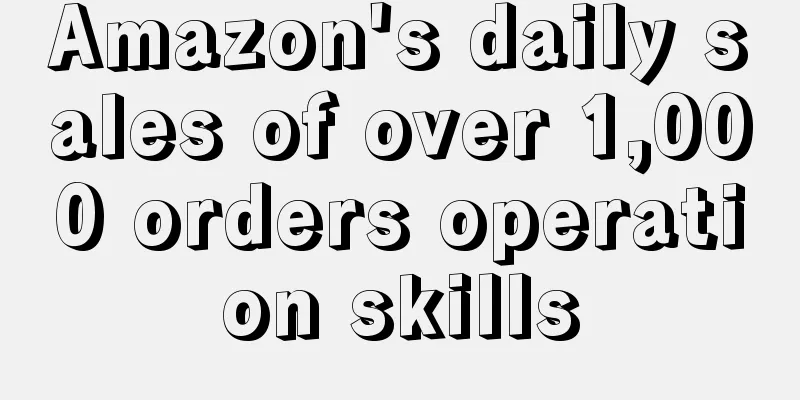Turbulent Russia hides the myth of Chinese sellers making money

|
Looking at the global market, the fierce battle between European and American e-commerce is in full swing, and emerging blue oceans such as Latin America and Southeast Asia are also surrounded by wolves. Outside the center of the war, Russia, which is so close yet so far away from China across the Heihe River, is also quietly bursting with business opportunities. The latest report released by foreign research institution Tochka Marketplaces shows that the median turnover of Russian e-commerce sellers increased by 43.4% year-on-year from January to May 2024. Among them, on large e-commerce platforms, the average income of sellers reached 235,000 rubles (about 19,700 yuan), a year-on-year increase of 136%. Russia, which has attracted much attention on the international political and economic stage, is not a popular place for cross-border e-commerce people to dig for gold. However, it is precisely this once "neglected" market that is now experiencing turmoil, attracting more and more Chinese merchants to seize the dividends. As the world's largest country, Russia has a vast territory, a huge population base and a high Internet penetration rate, which contains an intriguing growth space. However, due to the limitations of backward infrastructure construction, consumer shopping methods and consumption habits, the development of e-commerce lags behind other mainstream markets. But during the outbreak of the COVID-19 pandemic, Russian President Vladimir Putin's two-month "ban" on physical store operations caused a large number of consumers to flock to e-commerce platforms, thus opening the floodgates for the online consumption boom: Russia's total online transaction volume in 2020 surged 59% year-on-year. In 2022, as the Russian-Ukrainian conflict broke out, thousands of Western brands and companies suspended their business or even withdrew from Russia. The chain reaction that followed was a huge market gap - Russia has a population of nearly 150 million and has a strong fixed demand for various products. To this end, Chinese sellers, who have natural advantages in product manufacturing and geographical location, have keenly targeted business opportunities in Russia and quickly launched an offensive against this long-neglected market. According to a large Amazon seller in Shenzhen, the industry at that time began to study Russia's e-commerce platforms, recruit talents proficient in Russian, and even travel to Russia for field visits, exhibitions, and to find agents and internet celebrities for promotion. Ozon, the largest local e-commerce platform, promptly caught up with this wave of wealth, opened its arms to Chinese sellers and provided a bridge connecting cross-border transactions between China and Russia, and even opened an office in Shenzhen. Relevant data show that in 2022, Russia's offline retail sales fell by more than 7%, while e-commerce transactions soared by 38%. In the face of these two black swan events, the epidemic and the Russia-Ukraine war With the joint efforts of the two, the Russian e-commerce market has soared rapidly, taking advantage of the right time and place, and has gradually transformed into another promised land for Chinese merchants to go overseas to seek gold. Compared with mainstream markets in Europe and the United States, Russia has many similar market characteristics. First, the national consumption level is high. As the world's fourth largest economy, Russia's per capita GDP is nearly $15,000. Second, there is a vast market growth space. According to relevant data, by 2023, Russia's Internet penetration rate will be as high as 89%, while the e-commerce penetration rate will be only 13.2%. The difference is that compared with developed countries, Russia's light industry product structure is single, and many companies face problems such as technical bottlenecks and backward equipment, resulting in low production efficiency and difficulty in meeting the market's growing and diversified demands. Therefore, it is highly dependent on imports. As a result, after a large number of Western companies withdrew, there was a dilemma of a large gap in the market. This is also the opportunity for Chinese merchants to open up the Russian market - China has a developed supply chain and mature production technology, and a rich variety of products to fill the gaps in the local market. More importantly, as China-Russia trade becomes closer, policy dividends are also being released. For example, in May this year, China and Russia signed a joint statement on deepening the comprehensive strategic partnership of cooperation in the new era, and pointed out that they will continue to expand the scale of bilateral trade, optimize the trade structure, deepen cooperation in service trade, e-commerce, digital economy, and sustainable development, and jointly maintain the stability and security of the industrial chain and supply chain. Data from China's General Administration of Customs show that in 2023, the bilateral trade volume between China and Russia will expand to 1691.59 billion yuan, a year-on-year increase of 32.7%. Among them, China's exports to Russia will reach 782.3 billion yuan, a year-on-year increase of 53.9%. Today, Russia has become China's fourth largest trade export country. Russia's cross-border e-commerce is experiencing turmoil, and local e-commerce platforms that have risen rapidly on the cusp of the trend are also being quietly taken over by Chinese merchants. According to research by Tochka Marketplaces, from January to May this year, both of the two leading Russian platforms achieved remarkable results: Ozon sellers’ revenue reached 108,400 rubles, a year-on-year increase of 53.8%; Wildberries The sellers' income reached 364,000 rubles, a year-on-year increase of 27.6%. Behind this, Chinese sellers play an important role. Ozon, known as the "Russian Amazon", was the first platform to sense the potential of Chinese sellers. As early as 2021, it opened a window for Chinese merchants to invest, and opened a headquarters office in Shenzhen in 2022. It plans to recruit more than 100,000 Chinese sellers in 2023 and drive a 10-fold increase in sales of Chinese sellers. Data shows that in 2022, goods from China accounted for 2.3% of Ozon Global 90% market share, covering popular sectors such as clothing, 3C electronics, furniture and home appliances. With the support of Chinese cross-border sellers, Ozon's number of active sellers and revenue scale have both skyrocketed, its market share has continued to expand, and it is even showing signs of overtaking Wildberries, the local No. 1 e-commerce platform. As "Russia's own Taobao", Wildberries is certainly not willing to be outdone. In August 2023, Wildberries began preparing to enter the Chinese market; in January 2024, Wildberries officially opened to Chinese sellers. It is reported that among the 200 Chinese sellers who joined the platform during the testing phase, one of them achieved sales of 500,000 in just three weeks. According to another Shenzhen seller, he sells more than 200 household products and auto parts on the platform, which will be shipped directly from the Moscow warehouse. After listing on the platform, some product names are displayed in Chinese, which will be automatically translated when users visit. Compared with European and American e-commerce platforms, Russian platforms like Ozon have a low entry threshold, a large scale and little competition, which provides a huge market space for Chinese sellers to take root in the local market. As the platform's early growth dividend surged, many sellers who entered the market first tasted the sweetness of explosive sales. With the support of a strong domestic supply chain and a rich variety of cost-effective products, the platform can quickly increase sales through massive distribution, achieving "orders are placed as soon as the product is put on the shelf." "Local categories are relatively scarce, and with many Western brands withdrawing from the market, Chinese products with extremely high cost-effectiveness have become popular and are favored by many Russians. We entered the market in 2022 and just caught this wave of traffic. In less than three months, sales soared by nearly 200%." A 3C seller selling on Ozon revealed. By the end of 2023, the number of Chinese sellers on Ozon will exceed 100,000, accounting for 20% of the total number of registered sellers. However, the crisis is surging under the surface. Sellers who are frantically seeking gold on Russian e-commerce platforms are inevitably facing challenges. At the end of March this year, Ozon issued a notice about payment delays to platform sellers: due to new bank regulations affecting the payment process, there may be delays in the arrival of funds in the seller's account. Ozon is trying its best to ensure that the funds are transferred to the seller's account as soon as possible and reduce possible delays in the future. Since the platform had experienced payment delays before, the notice did not attract much attention from sellers at first. Then, after Ozon issued several notices of delayed payment and announced that the China Sellers Investment Summit originally scheduled for April 11 would be postponed to the end of May, sellers began to realize the seriousness of the matter. Due to the complex influence of geopolitical factors such as Western sanctions against Russia, Russian platforms have repeatedly encountered problems with payment collection in recent months. The reason behind this is that some Russian banks have been blocked by the international settlement system SWIFT. The first is that a large amount of foreign exchange has been frozen; the second is that the bank has restricted or changed its collection policy, which has extended the review stage to a certain extent, affecting the collection process. It was not until June this year that Ozon launched a new payment method, GEP, and sellers who had been owed money for three months began to receive payments from the platform. However, during this period, many sellers once faced the dilemma of cash flow interruption and difficult operation, and their store performance even plummeted. Therefore, even if the platform successfully recovered the funds, many Chinese sellers believed that the Russian market had changed. On the one hand, the platform's bonus period has ended. It is not just Ozon. As more and more Chinese merchants follow suit and enter the market, the competition among major e-commerce platforms is increasing day by day, and the market pie is constantly being snatched away. Relevant data shows that nearly 90% of sales in the Russian e-commerce market are concentrated in the hands of the top 10% of large sellers, and the survival space for new sellers is very limited. In such a market environment, price wars are also intensifying. At the same time, the platform's regulatory rules are constantly upgrading. Coupled with the impact of the geopolitical crisis, which leads to large fluctuations in exchange losses and other factors, Chinese sellers are also facing increasing operating risks on the Russian platform. On the other hand, although the Russian e-commerce market has entered the fast lane of growth in recent years, it also faces many development pain points left over from history. Although Russia has a vast territory, its population density is low and unevenly distributed, and the relatively imperfect logistics infrastructure construction has greatly increased the difficulty and cost of logistics distribution. The logistics and transportation chain of cross-border sales is even more complicated and lengthy, which greatly affects the consumer experience from the buyer's perspective and greatly reduces sales competitiveness from the seller's perspective. Overall, the Russian e-commerce market is in a stage of rapid growth, and there is still a lot of market space to be tapped. But in addition to opportunities, challenges also exist. Today, the conflict between Russia and Ukraine has not yet been resolved. For this market, the geopolitical crisis that accompanies it is still the biggest unstable factor that hinders cross-border sellers from making money. A group of Chinese sellers seized the bonus in the Russian market early and realized their dream of getting rich. But as this wave of turmoil passed, especially under the warning bell of the "Ozon payment incident", many sellers who followed the trend began to return to rationality and assess the situation. |
<<: From product power to brand power, how do cross-border sellers “advance step by step” on Amazon?
>>: Amazon adds more fees, which will be implemented in August!
Recommend
Summarize the current situation, methods and cases of using CPC advertising to promote products on Amazon platform
Analysis of advanced techniques for Amazon CPC adv...
Less than two years after entering the track, the average daily sales of the big promotion reached 5,000! This track may become a new engine!
In the post-epidemic era, global consumption is sh...
PPC Advertising Data Report Interpretation
After doing Amazon advertising, you must analyze t...
What is Metropolis Express? Metropolis Express Review
This entry introduces the business scope and organ...
Good news! Amazon has launched this new tool which is awesome!
Reducing the return rate has always been an import...
What is Amazon rating? Amazon rating review
In September 2019, Amazon tested the waters in the...
28 essential Amazon operating knowledge and common problem response strategies
1. Category review entrance : Backstage homepage -...
What is 17Track? 17Track Review
17Track (www.17track.net) 17TRACK is a global logi...
Nearly 70% of cross-border traders do not receive year-end bonuses? Sellers: It’s good enough if there is no deduction!
As the Spring Festival approaches, many cross-bord...
Canadian e-commerce is developing rapidly! Retail e-commerce growth rate reaches 12.0%
It is learned that according to foreign media rep...
What is Jinwei Logistics? Jinwei Logistics Review
Shanghai Jinwei Logistics Co., Ltd. was establishe...
A generous payment of 100 million? Finally, you don’t have to worry about adjusting the payment cycle!
Some time ago, Etsy was attacked by sellers for fo...
Amazon US may launch its own brand TV in October! TCL participates in the design and manufacturing!
It is learned that according to foreign media repo...
What is the Buy Box? Buy Box Review
The Buy Box is the golden shopping cart on Amazon....









